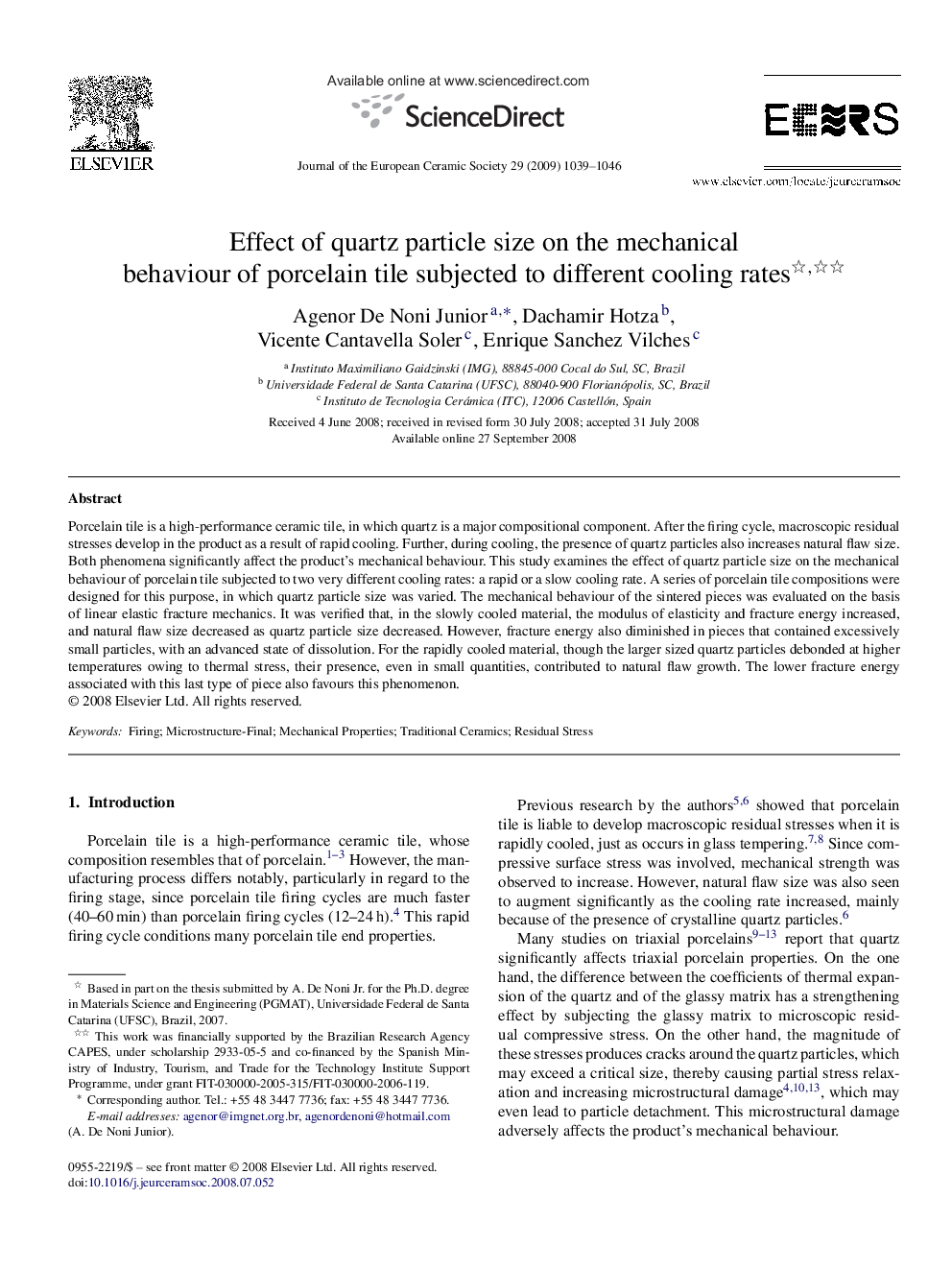| Article ID | Journal | Published Year | Pages | File Type |
|---|---|---|---|---|
| 1477530 | Journal of the European Ceramic Society | 2009 | 8 Pages |
Porcelain tile is a high-performance ceramic tile, in which quartz is a major compositional component. After the firing cycle, macroscopic residual stresses develop in the product as a result of rapid cooling. Further, during cooling, the presence of quartz particles also increases natural flaw size. Both phenomena significantly affect the product's mechanical behaviour. This study examines the effect of quartz particle size on the mechanical behaviour of porcelain tile subjected to two very different cooling rates: a rapid or a slow cooling rate. A series of porcelain tile compositions were designed for this purpose, in which quartz particle size was varied. The mechanical behaviour of the sintered pieces was evaluated on the basis of linear elastic fracture mechanics. It was verified that, in the slowly cooled material, the modulus of elasticity and fracture energy increased, and natural flaw size decreased as quartz particle size decreased. However, fracture energy also diminished in pieces that contained excessively small particles, with an advanced state of dissolution. For the rapidly cooled material, though the larger sized quartz particles debonded at higher temperatures owing to thermal stress, their presence, even in small quantities, contributed to natural flaw growth. The lower fracture energy associated with this last type of piece also favours this phenomenon.
